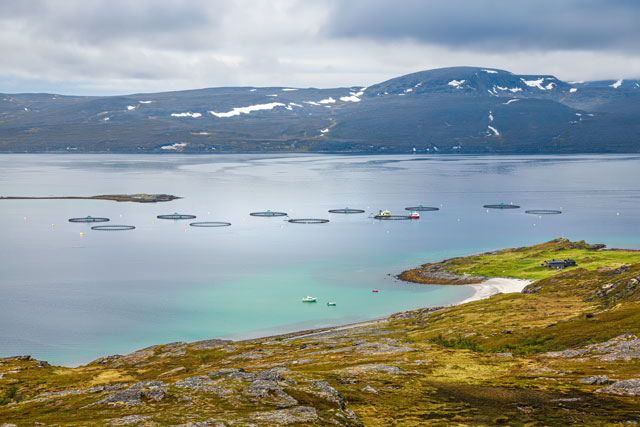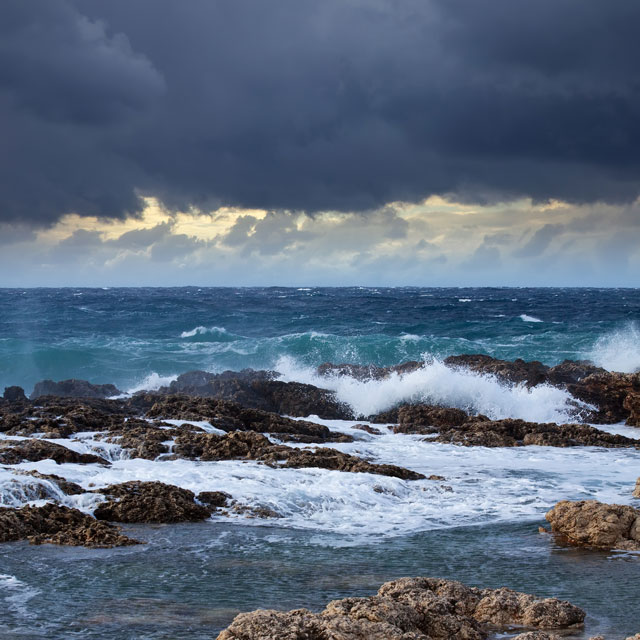
Fiji’s ecosystem-based approach to sustainable ocean planning
Sustainable Ocean Plan
Fiji’s Sustainable Ocean Plan, known as their National Ocean Policy (NOP), lays out Fiji’s commitment to sustainably manage 100% of ocean area under national jurisdiction and its designation of 30% of marine protected areas by 2030.
As a small island developing state and large ocean nation, Fiji’s exclusive economic zone (EEZ) is over seven times larger than its land mass. Most of their EEZ has an abundance of biodiversity and hotspots of fish aggregation, which are critical to support local coastal economies, and domestic and international fisheries. Managing these natural resources with local stakeholders is a challenge.
Fiji has applied an ecosystem-based approach to ensure the NOP considers ocean health, productivity and resilience of ocean ecosystems and the interactions with people. A core element of this approach is employing marine spatial planning to identify the compatibility of human activities with conservation and sustainable management goals.
A strength of Fiji’s NOP is its emphasis on collaboration through a steering committee, developed to guide the implementation of their plan. This ensures that the Fijian Government clearly understands the needs of its different stakeholders and fully involves them in the process of both conserving the environment and advancing a sustainable ocean economy.
Collaboration is particularly important given the size of the EEZ, which exerts pressure on Fiji’s limited human resources and available financing to monitor and police the area.

Challenges
Implementing Fiji’s ecosystem approach to sustainably manage the ocean has encountered a series of challenges.
Problem: Conflicts with stakeholders. A notable issue arises from conflicts with stakeholders, particularly concerning the design of Marine Protected Areas (MPAs). A crucial objective is to establish “30% of the EEZ as a marine protected area by 2030.” However, the overlap between protected areas and marine hotspots can lead to tensions with the fishing industry due to reduced access. There are two main solutions to this problem:
Adopting a science-led methodology: To address this intricate conflict, the Fijian Government adopted a science-driven, evidence-oriented strategy in MPA design. This ensures the precise selection of areas for protection while also pinpointing underutilised regions with potential for fishing.
A staggered approach: The MSP is also being introduced in a staggered approach, with incremental targets of 5% protected areas by 2024, 10% by 2025, 15% by 2028, and the final 5% by 2030. This provides stakeholders assurances that MPA designation can coexist with minimal disruption to their activities. It demonstrates that protected areas do not imply a complete ban; instead, certain activities like shipping lanes and leaner endeavours such as sport fishing or commercial fishing under-regulated quotas can persist to ensure sustainability.

Expected benefits
Who were the stakeholders involved and how were they engaged?
The fishing industry, as a primary stakeholder, plays a significant role in shaping the creation and execution of Fiji’s NOP. However, engaging other stakeholder groups was pivotal to comprehensively and effectively integrating the SOP and reinforcing its potential to drive holistic and enduring oceanic conservation. These encompass:
Local and International NGOs: Collaboration between the Fijian Government and NGOs such as the International Union for Conservation of Nature and the Wildlife Conservation Society (WCS) proved instrumental. These organisations helped identify specific marine areas or seascapes within Fiji’s EEZ that required protection. They also provided scientific research to support strategies for preservation and protective measures needed.
Local Experts: Fiji’s NOP uniquely emphasises the harnessing and expansion of local expertise. This approach leverages the insights of local specialists who possess an intrinsic understanding of Fiji’s ecosystems, complementing the contributions of external researchers.
Private Sector: While private sector involvement remains limited, the Government is actively seeking avenues for collaboration. A noteworthy challenge stems from the divergence between profit-driven private sector motives and the sustainability-focused objectives of the NOP. To bridge this gap, a common ground needs to be established, potentially involving investments in renewable ocean technologies.
Fiji’s ecosystem-based approach has yielded a multitude of advantages in developing its NOP, including:
Improved communication, coordination, and integration: Communication was facilitated by the National Ocean Policy Steering Committee. This helped foster a more comprehensive representation across diverse ministries and stakeholders, effectively channelling efforts, avoiding duplication, and identifying opportunities for further advancement. Notably, the integration of the Ministry of Women and Youth was pivotal in addressing a critical gap within Fiji’s SOP, specifically concerning the absence of a gender-equity-social-inclusion dimension. The Committee proactively engaged with USAID, to assist in incorporating a Gender-Sensitive and Equity (GSE) policy into the NOP—which was successfully accomplished within a two-month timeframe.
Financing: Access to climate financing for the ocean-climate nexus is also improving owing to the clear and robust Ecosystem-Based Approaches process and outcomes of the NOP.
Challenges
Fiji confronted a range of challenges during the development of its NOP, and the devised solutions hold valuable insights for other countries grappling with similar issues.
Challenge: integrative consultations. A prominent hurdle was ensuring consultations were comprehensive and included all Fijians affected. This was further complicated by the ocean’s expansive scope and the variety of stakeholders impacted by marine issues. The inherent difficulty of reaching all communities required innovative measures.
Solution: SWGs and social media strategies. Fiji introduced Sector Working Groups (SWGs) spanning seven distinct sectors, including landowners, business owners, NGOs like WWF, ADB, World Bank, and Fiji’s development bank. These groups provided a platform for the diverse voices of Fiji’s population and disseminated crucial information throughout communities. To optimise engagement, Fiji also ran social media consultations, seeking inputs and feedback from communities online. This multifaceted approach promoted widespread support for the policy, although navigating the transition from policy formulation to endorsement was still challenging.
Guidance for other countries
Countries should aim to implement an ecosystem-based approach that is practical and feasible, according to their own national circumstances. For example, Marine Spatial Planning can work for any coastal country as long as it can be financed by a developing partner, in Fiji’s case that was the Waitt Institute. The key is to start implementing ocean policies and solutions, no matter the scale, and get government buy-in.





 Previous
Previous